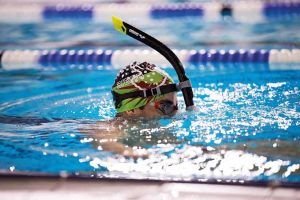
7 Best Swim Snorkels for Better Technique and Faster Swimming
Ready to throw down on a new swimmer’s snorkel? Here are reviews of the best swim snorkels for lap swimming.
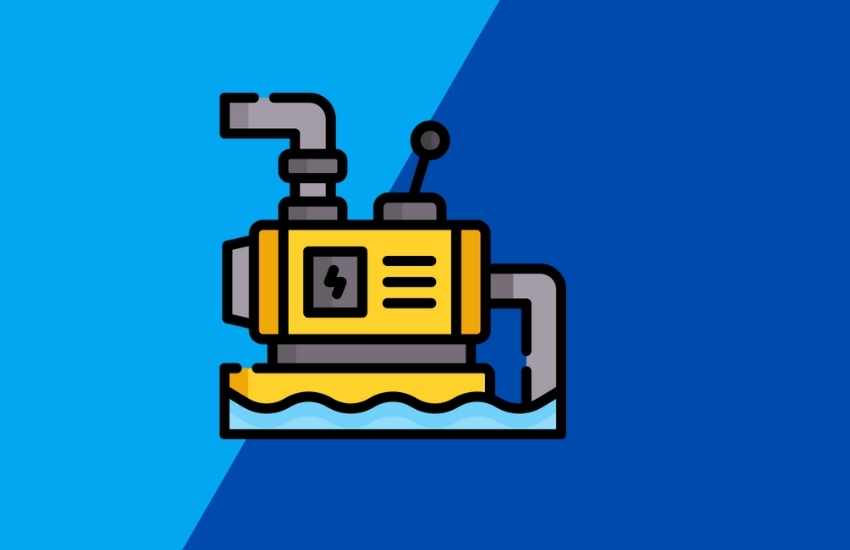
If you are like most people, when you are trying to keep your swimming pool’s water crystal clear, you focus on adding chemicals and doing regular tasks such as vacuuming and brushing off the walls of your swimming pool.
While these are hugely important pool maintenance steps, they can be made much more difficult and less effective by having a pump on your swimming pool that is not sized correctly.
If you have an undersized pump on your pool, then you will not be circulating the water in your swimming pool as often as you should, you will have less suction when using your pool vacuum, and the surface of your pool will not be cleaned by your skinners as effectively as it could be.
That’s why having a properly sized pool pump is so important and unfortunately, many pool owners don’t. Now that you realize this, you may be asking yourself ‘what size pump do I need for my pool’.
It’s a question that I am about to answer for you.
I will start by saying that sizing a pool pump is not an exact science nor does it need to be.
It is more of an approximation and you can err to the side of caution and go with a little more powerful pump once you have determined a figure for the pool pump size that you need.
You can also forget about going strictly by the horsepower of a pump. That’s because one manufacturer’s 2 horsepower (HP) pool pump may not move water as efficiently as another manufacturer’s 2 HP pool pump.
So, what do you need to consider when determining the right size pump for your swimming pool?
Take a look:
Here is how you go about determining the best pool pump for your swimming pool:
Step 1: Figure Out Your Swimming Pool’s Water Volume
To come up with a pool volume in gallons for your swimming pool, you have to take into consideration several pool dimensions. These include:
You can use this handy pool volume calculator from calculator.com to avoid stressing out over determining how many gallons of water are in your swimming pool.
For our calculations here, we will say our pool has a 30,000-gallon capacity.
Step 2: Determine the Minimum Flow Rate Necessary to Filter Your Pool Efficiently
This is a fairly easy calculation once you know your swimming pool’s gallonage. You use the following formula.
Pool gallonage x 2 (the recommended number of cycles in a day) ÷ daily hourly run time ÷ 60 (minutes in an hour).
So, for a 30,000-gallon pool that runs continuously (24-hours), the formula is:
30,000 x 2 ÷ 24 ÷ 60 = 41.6 or rounded up it’s a 42 GPM minimum flow rate.
Step 3: Establish the Maximum Flow Rate Necessary to Filter Your Pool Efficiently
To establish the max flow rate needed for your swimming pool, I like to go by filter surface area.
Here is a chart containing filter surface area and associated maximum flow rates:
| Type of Filter Most Common Sizes | |||||
| Sand | |||||
| Tank Diameter | 19″ | 21″ | 24″ | 30″ | 36″ |
| Related Surface Area | 1.8 sq ft | 2.3 sq ft | 3.1 sq ft | 4.9 sq ft | 6.9 sq ft |
| Max Flow Rate | 40 GPM | 50 GPM | 60 GPM | 100 GPM | 140 GPM |
| Cartridge | |||||
| Surface Area | 100 sq ft | 200 sq ft | 300 sq ft | 400 sq ft | 500 sq ft |
| Max flow Rate | 38 GPM | 75 GPM | 112 GPM | 150 GPM | 150 GPM |
| Diatomaceous Earth (DE) | |||||
| Surface Area | 24 sq ft | 36 sq ft | 48 sq ft | 60 sq ft | 72 sq ft |
| Max Flow Rate | 48 GPM | 72 GPM | 96 GPM | 120 GPM | 144 GPM |
You should be able to find his information on the label of your pool filter or by referring to the website of the manufacturer of your pool pump.
So, for our calculations, we will say that we have a 300 square foot cartridge-style pool filter and that translates to having a max flow rate of 112 GPM.
Step 4: Choose a Target Flow Rate for Your New pool Pump
Here you simply want to take your minimum necessary flow rate calculation and add it to your maximum necessary flow rate calculation. Once that’s done, you simply divide that number by 2. That will give you your target flow rate for your new pump.
For example, if you need a minimum flow rate of 42 GPM and a maximum flow rate of 112 GPM, once you add them together and divide them by two, then the target flow rate for your new pool pump will be 77 GPM.
Step 5: When to add in Total Dynamic Head (TDH) or Plumbing Resistance
Here is a pump sizing dynamic that I would not stress out about too much because it does not apply in most pump sizing situations.
It takes into consideration such factors as the distance of your pool filtration equipment from your pool, any height increase that plumbing has to go up, and the size of plumbing pipes and bends in that plumbing, and equipment such as filters and pool heaters.
When all of this is considered together it gives you what is known as Total Dynamic Head (TDH) or plumbing resistance.
Don’t bother taking the time to figure in TDH unless your pool equipment is located extremely far from your pool or your pool water has to go a long way uphill from your pump to get to your swimming pool.
If this is the case with your pool, then it’s best to have a pool professional determine what this figure is and what size pool pump you need.
So, we will ‘always’ add a conservative figure for TDH into our pool pump sizing task of 80 feet of water.
Step 6: Choose a Pool Pump that Meets Your Calculated Target Flow Rate
Every manufacturer will make a performance chart available for each pool pump model that they make. That means when looking for a pool pump model that you are interested in purchasing, you have to take into consideration our conservative TDH figure of 80 feet of water and our target flow rate of 77 GPM.
Below is a performance chart for a Pentair WhisperFlo ® High-Performance Pump 2-speed pump.
So, when cross-referencing this chart based on this model pump running on high speed (3450 RPM), we round off our 77 GPM target flow rate to 80 GPM and cross-reference it with our conservative 80-feet of water head estimate. Those figures intersect at the ‘red X’ in the diagram above which is a ‘turquoise’ colored line.
When comparing that color to the high-speed pump rating at the top right of the chart, this tells us that we need to purchase a 1 ½ horsepower (HP) Pentair WhisperFlo ® High-Performance Pump 2-speed pump to meet our flow rate needs (The red checkmark).
There is even a website that you can go to that has a free pool pump size calculator that will make it easy for you to determine what the correct pump size is for your swimming pool.
You can also take the above information to any pool supply store or give it to a pool installer and they will be able to help you to determine what size pool pump you require.
As a tip, I always suggest to pool owners they purchase a pump that ‘slightly’ exceeds the calculated required flow rate of a pump for their swimming pool.
Emphasis on ‘slightly’ because you can run into problems by having too much pressure running through your pool’s plumbing system.
Here are some excellent questions regarding pool pumps that I get asked very often:
Variable speed pool pumps have taken pool equipment technology to a whole new level.
They work by adjusting the speed that they move water at to match the task they are currently being used for.
This results in longer pump life and a lower electric bill for swimming pool owners. This includes boosting the suction when you are vacuuming and using less power when just circulating your pool water.
While I am a big fan of variable speed pumps, they are expensive, they are not always compatible with older swimming pool equipment, and they are usually not practical for above-ground pools and smaller size pools.
This is one of the oldest debates among swimming pool professionals such as myself. I am a big fan of running a swimming pool pump 24-hours a day during the swim season.
You then get continuous filtering and chemical distribution of the pool water. It also does not hurt a pool pump because they are designed to be run for long periods and they are very energy efficient when operating.
Detractors always point out that pool pumps don’t need to be run 24-hours a day to keep pool water clear, the heat buildup in the motor takes away from a pool pump’s useful life, and a pool owner will waste electricity and pay more for their energy bill.
Perhaps a better question is if it’s necessary to run your pump continuously? The answer to this is no. You just have to run your pump long enough to circulate all of the water in your swimming pool 2X a day.
For example; if your pump is rated at 30 gallons per minute and you have a 10,000-gallon swimming pool, it takes 5 ½ hours to circulate all of the water in your pool once. So, you will need to run your pump for at least 11 hours a day.
When answering the question of how often should you clean out your pool pump’s strainer basket, I will start by telling you why this is so important. It’s because if that strainer basket gets too full, it will cut down the flow through the pump and negatively impact the circulation in the pool.
Also, if your pump runs too long with a full strainer basket it will overheat your swimming pool pump and the strainer housing which can result in an expensive repair.
A good rule of thumb here is to clean out your pump strainer basket every time you clean out the skimmer baskets on your swimming pool. That means at least once a week.
If you own a saltwater pool, it’s good that you are concerned with how this will impact your pool filtration equipment including your pump. That’s because salt can be corrosive but then again if you do not have a saltwater pool, you are probably using even more corrosive chlorine as a sanitizer.
Most swimming pool pump manufacturers are aware of the conditions that their pumps are typically exposed to and build them accordingly. Some have even used more plastic in them than ever before to make them more resistant to salt, chlorine, and other forms of corrosion.
So, you can use any pump that meets your requirements as far as the pool flow rate goes. If by chance you do get a large amount of chlorinated water or saltwater on your pump while performing maintenance on it, then take some time to wipe it down with a damp cloth just in case.
Pool pump size is by far one of the most critical aspects when it comes to keeping your pool water clear and having an efficient pool circulation system.
I will also tell you that just because your swimming pool was installed by a professional does not mean that you have the right size pool pump for your filtration needs.
This is something that should be quite obvious to you, so you do need to go through the pool pump size calculation steps just to be sure.
If your pool stays crystal clear with a minimum effort, you have good suction when vacuuming, and the skimmers keep debris and insects off of the top of the pool, then chances are you have the proper pump size for your pool.
On the other hand, if the opposite of the above-mentioned traits is true, then take the time to do the calculations necessary to determine if you indeed have a properly sized pool pump.
If after making these calculations the answer is no, you can save a lot of headaches, time, and effort by installing a properly sized pool pump.
6 Best Pool Cover Pumps for Protecting Your Swim Pool. The right pool cover pump protects your pool by clearing water and snowmelt from the top of your swimming pool. Here’s a detailed look at the best pool cover pumps on the market right now.
7 Best Intex Pool Filter Pumps for Cleaner Pool Water. Looking to upgrade your Intex pool pump? Here’s what you need to know about Intex’s line of pool filter pumps.
5 Best Pool Timers (and How Much Money You Can Save Using One). Is your pool or hot tub running up big electricity bills? Keep your pool clean and cut costs with our favorite pool timers for every budget.
Subscribe to the YourSwimLog.com newsletter and get tips and advice on how to swim faster every weekday morning, straight to your inbox.
Join 33,000+ swimmers, coaches, and swim parents learning what it takes to swim like a boss.
Unsubscribe anytime. Email will never be shared or sold.

Olivier Poirier-Leroy Olivier Poirier-Leroy is the founder of YourSwimLog.com. He is an author, former national level swimmer, two-time Olympic Trials qualifier, and swim coach.

Ready to throw down on a new swimmer’s snorkel? Here are reviews of the best swim snorkels for lap swimming.
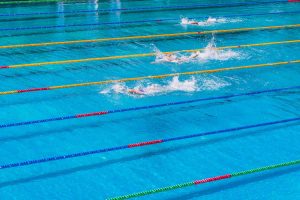
Looking to get some new swim gear on a budget? Shop the best Black Friday deals for swimmers in this exclusive guide.
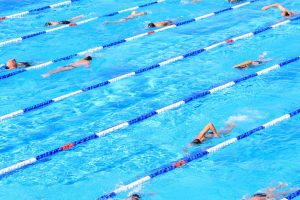
Looking for the best swimming app to maximize your time and effort in the water? Here’s a look at the top swim apps for conquering your swim workouts.
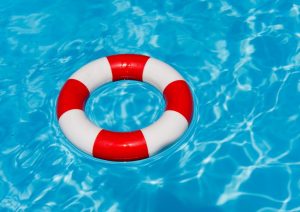
Wondering how often you should be testing the water in your pool or spa? Here’s a detailed look at how frequently you should test your pool. Your swimming pool and spa relies on being properly balanced to keep the water clean and safe for swimming. As a pool owner, you
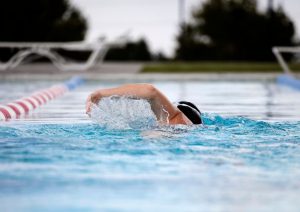
Fed up with the effects and smell of chlorine in your hair after swimming? Here is how to remove chlorine from your hair once and for all.
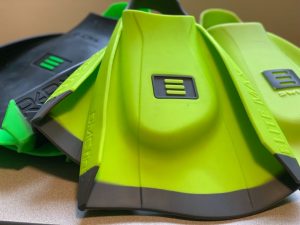
The DMC Elite fins are high-performance training fins for competitive swimmers. Here’s a review of why these fins are flat-out awesome.

LANE 6 PUBLISHING © 2012-2024 · PRIVACY POLICY · RETURN POLICY · TERMS OF SERVICE · AFFILIATE DISCLOSURE